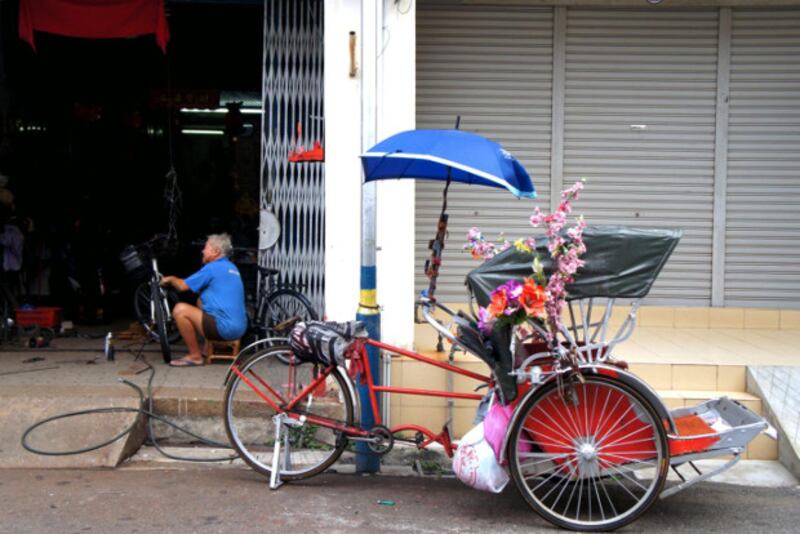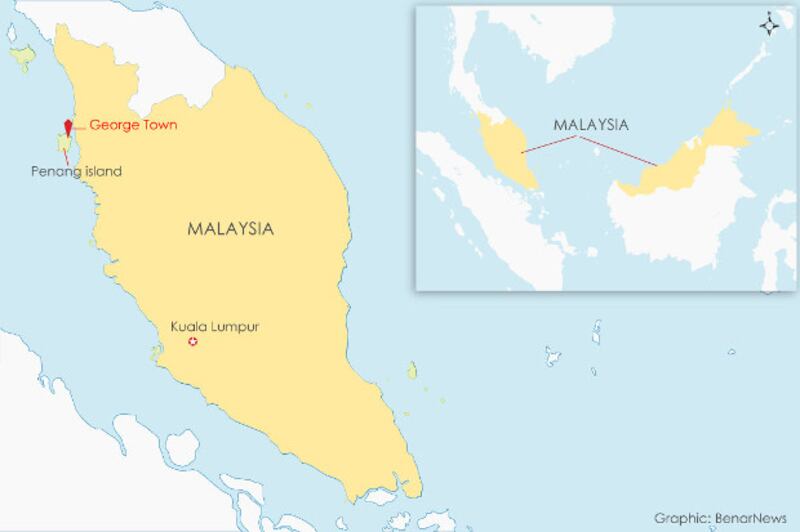George Town, capital of the Malaysian island-state of Penang, oozes a bygone colonial charm that draws tourists to this jewel of a city on the Strait of Malacca.
Yet local preservationists worry the allure of old shop-houses in George Town’s historic quarter, which is listed as a UNESCO World Heritage Site and where ethnic Malay, Chinese and Indian traders live and do business is fading and giving way to upscale boutiques, hipster cafes and other modern commercial properties.
For preservationist Mark Lay, efforts by city officials and developers to attract more revenue from tourism by bringing in new projects and taking advantage of the heritage listing as a selling point threaten to undermine the town’s “living heritage,” as he put it.
Local authorities seem “more concerned with tourism and investments than preserving George Town’s Outstanding Universal Value (OUV),” Lay told BenarNews. OUV is a term used by the U.N.’s Educational, Scientific and Cultural Organization to describe urban attributes – such as streets with rows of old shop-houses – that led to the city’s listing in 2008 as a World Heritage Site.
“Tourism has taken over in some heritage areas like Armenian Street and Keng Kwee Street. Left unchecked, we foresee a huge part of the heritage site given over to tourism,” warned Lay, who is with the local watchdog group George Town Heritage Action (GTHA).
He cited cases where building owners in the heritage zone evicted old tenants and allowed high-paying new occupants to “gut” and renovate old structures in ways that did not comply with the heritage guidelines.
“It goes against what the UNESCO listing stands for … the ultimate goal seems to be developing a touristic heritage theme park, rather than safeguarding the OUV criteria for which George Town was awarded the UNESCO status in the first place,” he said.

A trishaw sits outside Choo Choon Yew’s shop, the only trishaw craftsmen left in Penang, Feb. 11, 2017. [S.C. Lei/BenarNews]
A boost for tourism
George Town – a former Straits Settlement created from more than 500 years of trade and cultural exchanges between East and West – became a World Heritage Site nine years ago along with Melaka city, a Peninsular Malaysia city that lies on the strait.
George Town’s heritage zone makes up about 260 hectares (642.4 acres).
The listing has boosted tourism, drawing 6.31 million tourists since 2008, according to the Penang Institute, a think-tank in the state.
The international prestige that comes with a listing “often helps raise awareness among citizens and governments for heritage preservation,” according to Paris-based UNESCO.
“Greater awareness leads to a general rise in the level of the protection and conservation given to heritage properties,” the U.N. agency said. It noted that countries could also apply for financial aid and expert advice from UNESCO’s World Heritage Committee to support preservation of listed sites.
But not enough is being done to preserve the city’s heritage site, and a conservation management plan known as the George Town Special Area Plan (SAP), was delayed for five years until it was finally gazetted last September, according to Lay.
“There was lack of political will to manage, monitor and enforce the contents of the document for fear of scaring away the tourism sector and future investment,” Lay said.
He has urged the Penang Island City Council and George Town World Heritage Incorporated (GTWHI) – the bodies that manage, monitor and promote the city’s World Heritage features – to work with UNESCO and the National Heritage Department to enforce regulations outlined in the special area plan.
‘Visitors come’
Ang Ming Chee, general manager of GTWHI, took issue with Lay’s claim that the heritage site was becoming “Disneyfied,” saying that tourism growth is normal for World Heritage Sites.
“Visitors come to see the townscape, architecture, cultures and local lifestyle. There are investors who are here because they appreciate the architectural heritage,” she told BenarNews.
Tourism revenue benefits and empowers communities in the city, who are encouraged to play active roles and sell Penang-made products that promote local culture, she said.
Noorhanis Noordin, who leads the city council’s heritage conservation department, said safeguarding George Town’s architectural heritage is an ongoing process.
Authorities have been clamping down on building owners who don’t comply with the strict heritage guidelines, she said.
The city council, from time to time, organizes workshops and seminars to educate property owners, contractors and the public on heritage-related development rules, she added.
“If they fail to comply, they will have to stop and remove the illegal work, or risk being taken to court,” Noorhanis told BenarNews.

